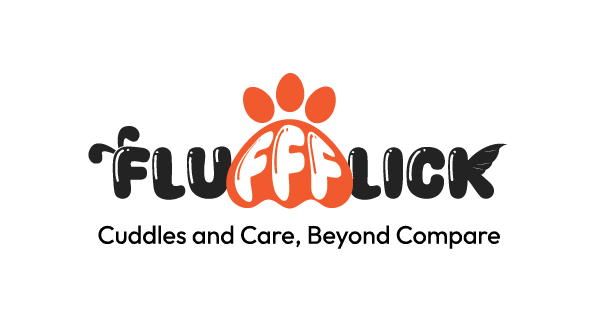Taking care of your pet’s dental health is crucial for their overall well-being. Poor dental hygiene can lead to a variety of issues, including gum disease, bad breath, tooth decay, and even more serious health problems like heart disease. To ensure your dog or cat enjoys good oral health, regular cleaning and preventive care are essential. In this guide, we’ll explore pet dental care at home tips, how to clean your pet’s teeth naturally, and how often you should brush them.
1. How to Clean a Dog’s Teeth Naturally
Cleaning your dog’s teeth doesn’t always require special products or a trip to the vet. There are several natural ways to maintain oral hygiene that can be incorporated into your daily routine. Here’s how to clean a dog’s teeth naturally:
- Raw Bones: Chewing on raw bones is a natural way to remove plaque and keep your dog’s teeth strong. The action of chewing helps scrape away plaque and tartar, but be sure to avoid cooked bones, which can splinter and cause harm.
- Coconut Oil: Applying a small amount of coconut oil to your dog’s teeth and gums can help reduce bacteria and plaque buildup. Coconut oil has natural antibacterial properties and can also improve breath.
- Carrots and Apples: Crunchy fruits and vegetables like carrots and apples are natural teeth cleaners. They help remove plaque as your dog chews and provide a healthy, low-calorie snack.
- Dental Chews: There are natural dental chews made with safe, non-toxic ingredients that promote oral health. Look for chews that are free of artificial flavours or chemicals.
While these methods are helpful, they should be combined with regular brushing for the best results.
2. Pet Dental Care at Home Tips
Maintaining your pet’s oral hygiene doesn’t have to be complicated. Here is some effective pet dental care at-home tips to keep their teeth and gums healthy:
- Brush Regularly: Brushing your pet’s teeth is the best way to prevent plaque and tartar buildup. Use a pet-safe toothbrush and toothpaste formulated specifically for animals. Never use human toothpaste, as it can be harmful to pets.
- Dental Wipes: If your pet doesn’t tolerate brushing, dental wipes can be a good alternative. These wipes are designed to remove plaque from the surface of the teeth and are easy to use.
- Water Additives: Dental water additives can be mixed into your pet’s drinking water to help reduce plaque and tartar. These products often contain enzymes that fight bacteria and freshen breath.
- Diet: Feeding your pet a balanced diet, including dry food and crunchy treats, can help reduce plaque. Avoid sugary or starchy treats, which can lead to tooth decay.
By incorporating these tips into your routine, you can keep your pet’s mouth healthy and prevent dental problems before they start.
3. Best Ways to Prevent Dental Disease in Pets
Preventing dental disease is key to ensuring your pet lives a long, healthy life. Here are some of the best ways to prevent dental disease in pets:
- Regular Brushing: Brushing your pet’s teeth at least a few times a week is the most effective way to prevent dental disease. The mechanical action of brushing removes plaque before it hardens into tartar.
- Annual Dental Checkups: Schedule regular veterinary checkups that include a dental exam. Your vet can identify early signs of dental disease and recommend professional cleanings if needed.
- Dental Chews and Toys: Dental chews and toys help to scrape away plaque and keep your pet’s teeth clean. Look for products that carry the Veterinary Oral Health Council (VOHC) seal of approval.
- Professional Cleanings: Even with the best home care, some pets may still need professional dental cleanings. This involves a deep cleaning under anaesthesia to remove tartar buildup and address any underlying issues.
Preventing dental disease requires a combination of home care and professional intervention. Regular monitoring and consistent care can keep your pet’s teeth in great condition.
4. How Often Should I Brush My Pet’s Teeth?
You may be wondering, “how often should I brush my pet’s teeth?” Ideally, you should brush your pet’s teeth every day. Daily brushing prevents plaque from hardening into tartar, which is more difficult to remove and often requires professional cleaning.
However, if daily brushing isn’t possible, aim to brush at least 3-4 times a week. Even occasional brushing can make a significant difference in maintaining your pet’s oral health. For pets who are resistant to brushing, using dental wipes, water additives, or dental chews can supplement your efforts.
5. Signs of Dental Problems in Dogs and Cats
Knowing the signs of dental problems in dogs and cats can help you catch issues early and seek veterinary care before they worsen. Some common symptoms of dental problems include:
- Bad Breath: Persistent bad breath is often one of the first signs of dental disease.
- Yellow or Brown Tartar: Visible tartar on your pet’s teeth is a sign of plaque buildup, which can lead to gum disease.
- Red, Swollen, or Bleeding Gums: Gingivitis or gum disease often causes inflammation or bleeding in the gums.
- Difficulty Eating: If your pet is reluctant to eat or chews on one side of their mouth, it could indicate tooth pain or infection.
- Pawing at the Mouth: Pets in pain may paw at their mouth or face frequently.
- Loose or Missing Teeth: Advanced dental disease can lead to tooth loss.
If you notice any of these signs, schedule a vet visit as soon as possible. Early intervention can prevent more serious issues down the road.
Conclusion
Proper dental care is crucial for your pet’s health and comfort. From learning how to clean a dog’s teeth naturally to incorporating dental chews and regular brushing, maintaining your pet’s oral hygiene can prevent serious problems like gum disease and tooth decay. By understanding the best ways to prevent dental disease in pets and recognizing the signs of dental problems in dogs and cats, you can help your furry friend live a healthier, happier life with a bright smile!

